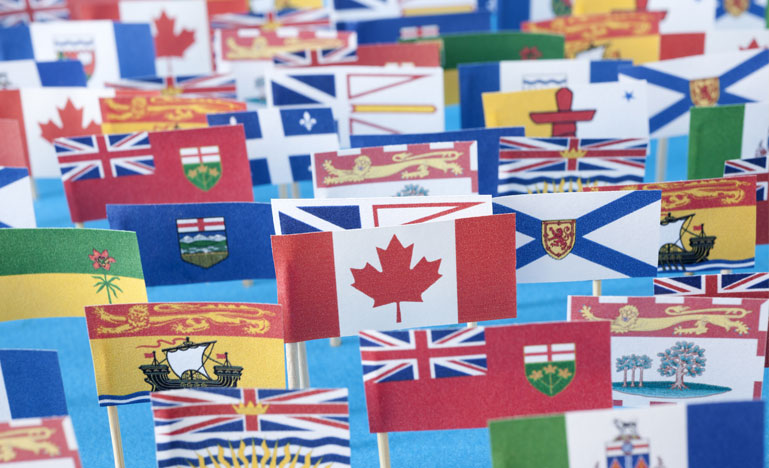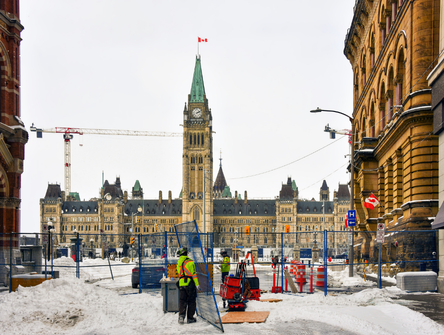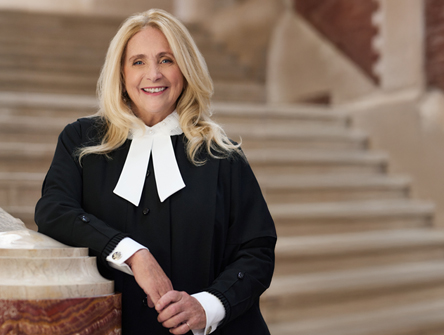In April, Dylan Finlay, tired of being cooped up in his home office, went for a run. On the way, he spotted a small green space with some chin-up bars. Ontario's emergency measures, adopted to combat COVID-19, closed outdoor recreation activities — but not, as he thought at the time, the green spaces themselves. They were still "open for walkthrough access," as the provincial regulations note.
Finlay, a Toronto lawyer with Oykhman Criminal Defence, concluded that a few chin-ups would be aboveboard under those rules. A nearby bylaw officer thought differently and issued Finlay an $880 fine.
Unsurprisingly, he intends to dispute the ticket. "I'm one of the lucky ones," he noted in an op-ed to the National Post. I have the resources to dispute this ticket. I can also afford to pay it if I lose." He noted that if someone receiving the Canadian Emergency Response Benefit is issued a ticket, half of it would go to paying down the fine.
These cases are becoming increasingly common. According to Policing the Pandemic, a mapping project that tracks tickets and criminal enforcement of COVID-19 emergency orders, 4,500 people were ticketed or charged in April alone. The fines total $5.8 million. The website has compiled instances fines issued to homeless people for sitting on public benches, to new immigrants walking through a park, and on First Nations reserves to residents for being out past curfew.
Finley commented in his op-ed: "Fining people for doing chin-ups, or rollerblading, or otherwise enjoying the outdoors erodes public goodwill for social distancing."
Admittedly, it's hard to imagine that the entire population would follow public health orders without the threat of punitive measures.
Even ardent civil liberties advocates, such as the Canadian Civil Liberties Association, concede that some level of enforcement is warranted. But the CCLA also argues that the volume of tickets is evidence of a problem. "It's a public health crisis, not a public order crisis," the association wrote in an open letter in April. "Too many Canadians doing their best have been charged under new COVID laws – laws which change rapidly, differing from city to city, province to province. It's confusing. One day it's okay to go here, but not there, and the next day it changes."
Therein lies a huge part of the problem. Restrictions and orders are not consistent from one jurisdiction to the next — in Finley's case, they are not even always internally consistent, as the letter of the order appears mismatched with the enforcement.
"It's all well and good to be an armchair critic, and to look from the safety of hindsight, but the fact is that we have to draw lessons," says Lisa Silver, an assistant professor at the University of Calgary law school.
In late April, Silver penned a blog to start the ball rolling on the conversations, not just about whether the current enforcement of quarantine and social distancing is appropriate, but how to make it better for next time — as it seems increasingly likely there will be a next time.
For starters, Silver says, "I'm not someone who's going to go out in front of city hall with 500 of my best friends and say this is all a conspiracy." But the country and the world have had to put together a whole suite of new norms that have governed which businesses can stay open, when and where we can travel, and how we interact with our neighbours.
Now that those measures have been in place for two months, she says, "we have to learn from this hodgepodge."
Silver is quick to acknowledge: "I don't know what the answer is." But, she says, but there has got to be something better than the status quo.
The CCLA has been compiling a detailed list of how the emergency orders vary from one province or territory to the next. In Alberta, gatherings of more than 15 are forbidden. In Manitoba, the number is 10. In British Columbia, it's 50 or more. Oddly, it has issued new orders expressly permitting gatherings of two to six people, even though not technically prohibited elsewhere.
Some provinces have managed a level of consistency with their neighbours. Gatherings of five or more people are banned in both Nova Scotia and Prince Edward Island, while it's 10 people in New Brunswick.
Quebec has more stringent and expansive orders than Ontario. For example, Quebec bans all outdoor gatherings of any size, unless social distancing is being practised. And it has set up checkpoints on the bridges between Ottawa and Gatineau to ensure Ontarians aren't crossing into their jurisdiction, save for a good reason.
Half the provinces require travellers from other provinces to self-isolate for 14 days upon arriving. The other half do not.
Provinces have changed and tinkered with these rules as the pandemic has worn on. And now, provinces are beginning to loosen those restrictions as the situation improves. But there is a risk that they may be tightened again if a second outbreak occurs. "How do you live in a regulatory framework that changes so much?" Silver asks.
This patchwork is a problem, Silver says. "When we're using enforcement measures that engage criminal law sanctioning, we have to do it in a thoughtful and consistent manner."
As provinces grappled with the early days of the pandemic, governments seemed to get a fair bit of leeway — they were figuring it out as things went along. But with the worst appearing to be behind us, for now, Silver says the tough questions have to be asked. Many should come from the legal community, especially.
"Isn't it part of our duties and responsibilities to come together and say: now what?" She says. Figuring out how to actually manage a population in lockdown isn't easy, but consistency should be a primary concern. "Are we a country that can't do that? I hope that we are a country that can."
Core to the problem is that the federal Quarantine Act, written to deal with pandemics, deliberately avoids interfering with provincial jurisdiction. It governs the borders and gives health officials the power to order quarantine for those arriving in Canada. It does not try and expand federal power beyond its existing border enforcement powers.
That has left the country in a tough middle ground. The pandemic has hit different parts of the country in different ways and to varying degrees. The prime minister and premiers have spoken regularly amongst themselves to ensure some level of consistency. But it is next to impossible to get 14 different governments to write every regulation in unison.
The federal Emergencies Act is designed to smooth over those regional inconsistencies. That law allows specifically for Ottawa to assume provincial responsibility in a national crisis, where the emergency may "exceed the capacity or authority of a province to deal with it." While there is certainly an argument to be made that responding to COVID-19 is beyond the capacity of the provinces, Ottawa has opted not to invoke the act, hoping collaboration will achieve the same results without steamrolling local jurisdictions.
According to Silver, Ottawa ought to have some power to mandate a level of consistency in response across the country without bringing out the heavy-handed modern successor to the War Measures Act. "Shouldn't there be a shared piece of legislation?" She asks.
We've seen it in other contexts -- in health for instance. An attempt by Ottawa to some consistency in provincial quarantine powers, or create national minimum standards, would echo the federal government's attempt to legislate a carbon pricing scheme. Arguments on the constitutionality of that program are now set to be heard in September.
But the carbon pricing system turns on Ottawa's powers under the national concern branch of the Peace, Order, and Good Government doctrine, which has yet to be fully tested. The jurisprudence on the emergency branch is much clearer. Even the dissenting opinion in R. v. Crown Zellerbach, which rejected the use of POGG, held that: "The federal Parliament clearly has power to deal with a grave emergency without regard to the ordinary division of legislative power under the Constitution."
Silver points out there are examples where areas of shared jurisdiction can be managed amicably. Ottawa has international treaty obligations to combat human trafficking, which it primarily does through the Criminal Code. But because the provinces are responsible for enforcement and labour standards, federal-provincial cooperation is critical for Ottawa to fulfill its obligation.
"If they can do it with that, why can't they do it with this?" Silver says.
As many have contended, Ottawa could maximize the results from social distancing and isolation if the public is fully aware of what the government is asking from its citizens. "What we want are laws that people can follow and understand," she adds.
It would also ensure that law enforcement, which has no particular expertise in public health, has a better understanding of what is and what is not appropriate conduct. "They need the structure as well," Silver says.
The end result of all the confusion appears to be the issuance of a slew of tickets and charges that are arbitrary and disconnected from the goals of the pandemic response. That means many — like Finlay — will be heading to court when this is all over to contest their fines.
"We need our courts to be working double-time [when this is all over]," she says. "Think of all these cases that were waiting to be heard. Then we're going to bring in all these arguments on all these tickets?"
The chances are good that the laws and regulations will survive any challenge, as the courts have recognized in the past that Section 1 of the Charter allows for otherwise unconstitutional laws to apply in times of emergency. But we won't know that until the cases are heard.
It has been suggested that prosecutors will drop these tickets after the pandemic. Issuing the ticket, in that case, was the objective.
"If it's not tested in court, does that mean it's alright?" Silver asks. It wouldn't be entirely out of the question to see applications for judicial review or Charter challenges of the emergency acts themselves, in that case, she adds.
Silver confesses she has no easy answer to these problems. She is hesitant to suggest that a federal-provincial-territorial committee may solve these problems — as committees can often slow and complicate a response, not streamline it — but she figures that might be the most straightforward answer. Or, at the very least, to monitor provincial actions and provide some advice.
"It really would have been good to have some oversight," she says.



